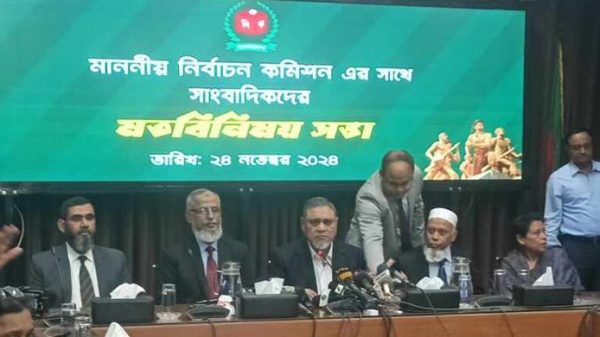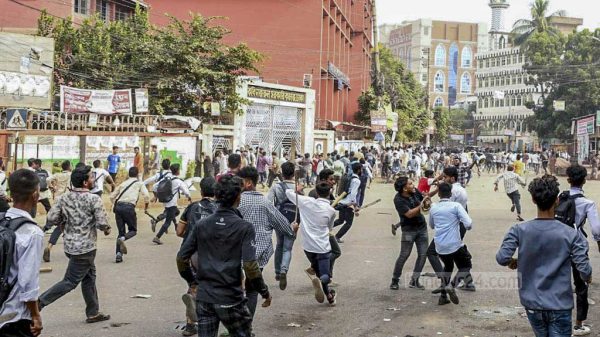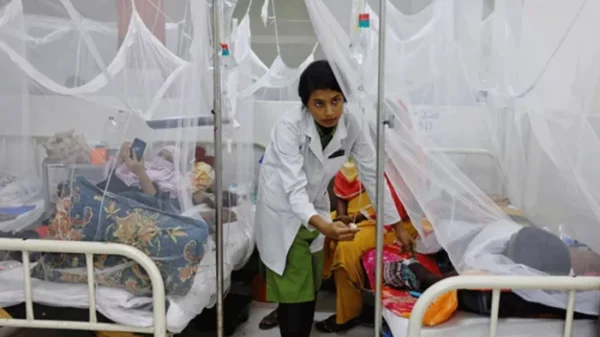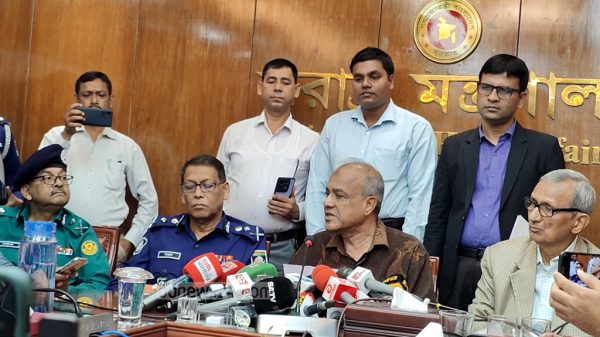Spain beat England to win maiden Women’s World Cup 2023

- Update Time : Sunday, 20 August, 2023, 06:22 pm
- 197 Time View

Online Desk: Spain defeated England 1-0 in the final of the Women’s World Cup on Sunday, capping off a tournament that has broken attendance and TV records and raised hopes of a surge in interest for the women’s game. Co-hosted by Australia and New Zealand, the ninth edition of the global showpiece event was the first to be held in the southern hemisphere.
While local interest ebbed when Australia exited in the semi-finals, just shy of two million fans will have passed through the gates in nine host cities after Sunday’s final crowd of 75,784is added to the tally. An Olga Carmona goal was the difference between the two sides in a pulsating game that saw Spain create the majority of the clear-cut chances.
Thousands of fans milled around Stadium Australia in Sydney hours before kick-off on Sunday, with troupes of drummers and stilt walkers creating a festival atmosphere. England and Spain were both making their first appearance at a Women’s World Cup final, while England’s wait for a first trophy since the men’s tournament in 1966 goes on.
Australia’s semi-final loss to England on Wednesday drew an average of 7.13 million viewers on the channels of local broadcaster Seven Network, the highest viewership ever recorded by research firm OzTAM, which launched in 2001. Matildas matches sold out months in advance, and organisers expect the average attendance to overtake 30,000 once all 64 matches are completed.
The last Women’s World Cup in France four years ago attracted more than 1.1. million fans to 52 matches with an average crowd of 21,756. Demand was weaker in New Zealand, whose team went out in the group stages. FIFA gave away thousands of tickets and some games attracted as few as 7,000 fans, although White Ferns matches broke records for a soccer crowd in the country.
FUNDING GAP
Australia’s players, who lost 2-0 in a third-place playoff match to Sweden on Saturday, will earn $165,000 each in prize money for this tournament, more than 300 times the A$750 ($480) they received for a quarter-final appearance in 2015.
But at the grassroots level, the sport needs more resources, Matildas striker Sam Kerr said after the loss to England on Wednesday. “We need funding in our development, we need funding in our grassroots,” she said. “We need funding, you know, we need funding everywhere.”
The Matildas’ standout World Cup campaign has led to calls for more support to women’s soccer in Australia, where it lags more popular football codes like rugby league and Australian rules. Australian Prime Minister Anthony Albanese responded on Saturday by promising A$200 million for women’s sport in the wake of the Matildas’ run to the semi-finals. Albanese said the money would be used to improve sports facilities for women and girls, with soccer tipped to receive “significant resourcing”.
The government also wants to ensure women’s sporting events are available on free-to-air television, after criticism that most World Cup games not involving Australia were behind a paywall. Women’s soccer has also confronted a variety of challenges involving finalists England and Spain, who will both be chasing a first world title in Sydney on Sunday.
Women were banned from official facilities in England, the home of the game, until 1970, and have long lagged the men’s team in interest and funding, although that began to change after the Lionesses won the European championship last year. The Spanish team, meanwhile, has been rocked by a locker room dispute with coach Jorge Vilda and the Spanish football federation, with some of their best players absent from the tournament as a result.










